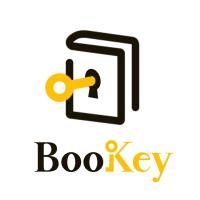Letzte Episode
Mastering Productivity and Mindfulness: The Ultimate Guide to the Bullet Journal Method
4. März 2024
Nächste EpisodeChapter 1:Summary of Full Book The Bullet Journal Method
The Bullet Journal Method by Ryder Carroll is a comprehensive guide to utilizing bullet journaling as a powerful productivity and mindfulness tool. The book offers a step-by-step explanation of the bullet journaling system, providing readers with the tools they need to organize their lives, achieve their goals, and cultivate a sense of purpose and mindfulness.
Carroll begins by introducing the concept of bullet journaling and its core principles, such as rapid logging, migrating tasks, and creating collections. He emphasizes that the beauty of the bullet journal lies in its adaptability, as it can be personalized and tailored to suit individual needs and preferences.
The book delves into the importance of reflection and self-assessment, encouraging readers to identify their priorities, values, and long-term goals. Carroll introduces the concept of "intentional living," which involves aligning one's actions with their values and making intentional choices to create a life that is fulfilling and meaningful.
Throughout the book, Carroll provides practical tips and techniques for effective bullet journaling, such as setting up the journal itself, creating different types of spreads, and utilizing various tools and accessories. He also includes examples and case studies to illustrate how others have successfully used bullet journaling to improve their productivity and well-being.
One of the key aspects of the bullet journal method is the emphasis on mindfulness and mental well-being. Carroll discusses the importance of self-care, stress management, and the power of gratitude. He encourages readers to incorporate mindfulness practices, such as meditation and daily reflection, into their bullet journaling routine to cultivate a sense of presence and awareness.
In the latter part of the book, Carroll addresses common challenges and roadblocks that may arise in the bullet journaling journey, providing strategies to overcome them and maintain consistency. He also explores advanced techniques for refining and optimizing the bullet journaling process.
Overall, The Bullet Journal Method offers a comprehensive and practical guide to implementing and maximizing the benefits of bullet journaling. Carroll's approach combines organization, productivity, and mindfulness to help readers create a life that is both efficient and meaningful.
Chapter 2:the meaning of Full Book The Bullet Journal Method
"The Bullet Journal Method" by Ryder Carroll is a book that introduces and explores the concept of bullet journaling. It offers a comprehensive guide to the bullet journaling system, which is a customizable organizational method that combines elements of a planner, to-do list, diary, and journal.
In this book, Carroll explains the principles of bullet journaling and provides practical tips on how to start and maintain a bullet journal. The method focuses on utilizing a simple system of rapid logging, which involves using short bullet points to jot down tasks, events, and notes. Carroll also emphasizes the importance of mindfulness, reflection, and intentionality in the bullet journaling process. He highlights the benefits of this method, such as increased productivity, improved organization, and enhanced self-awareness.
Furthermore, "The Bullet Journal Method" delves into the philosophy behind bullet journaling and explores how it can be used as a tool for personal growth and self-discovery. It encourages individuals to embrace their unique styles and adapt the system to suit their needs and preferences. The book also delves into various topics such as goal setting, habit tracking, time management, and creative expression within the bullet journaling framework.
Overall, the full meaning of "The Bullet Journal Method" is to provide readers with a comprehensive guide to bullet journaling as an efficient and mindful organizational system that can bring more focus, intentionality, and accountability into their lives.
Chapter 3:Full Book The Bullet Journal Method chapters
Chapter 1: The Origins of the Bullet Journal Method
In this chapter, author Ryder Carroll introduces the concept of the bullet journal and how it started as a personal productivity system that he created to help him stay organized. He explains the reasons why traditional planning methods often fail and the key principles behind the bullet journal method.
Chapter 2: The Benefits of Analog
Carroll explores the advantages of using analog tools, such as pen and paper, instead of digital apps or devices. He discusses how physical writing and the tactile experience of using analog tools can enhance creativity, focus, and memory.
Chapter 3: The Basics: Rapid Logging
The author explains the fundamental technique of rapid logging, which involves using symbols and short sentences to quickly jot down tasks, events, and notes. Carroll provides examples and guidelines for effective rapid logging and explains how it helps in decluttering the mind and capturing important information.
Chapter 4: Collections: The Heart of the Method
This chapter focuses on collections, which are the core building blocks of the bullet journal method. Carroll explains the different types of collections, such as the future log, monthly log, and daily log, and how they can be used to organize tasks, goals, events, and ideas.
Chapter 5: Migration: The Art of Rewriting
Carroll introduces the concept of migration, which involves reviewing and rewriting tasks from one collection to another. He explains how migration helps in prioritizing tasks, identifying what is important, and discarding what is not. The author provides practical tips for effective migration and discusses how it can promote self-reflection and continuous improvement.
Chapter 6: Daily Rituals: The Power of Routines
In this chapter, Carroll emphasizes the importance of daily rituals and how they can help in establishing a sense of routine and consistency. He discusses various rituals, such as the daily log, evening reflection, and weekly review, and explains how they can enhance productivity, focus, and self-awareness.
Chapter 7: Getting Started: Setting up Your Bullet Journal
Carroll provides a step-by-step guide on setting up a bullet journal, including selecting the right tools, creating an index and key, and designing collections. He shares examples and templates to help readers get started and encourages customization based on individual needs and preferences.
Chapter 8: The Art of BuJo
This chapter delves into the aesthetic aspect of bullet journaling. Carroll discusses how one can add creative elements, such as doodles, color coding, and artistic layouts, to personalize and enhance the bullet journal experience. He provides tips and inspiration for incorporating art into daily planning.
Chapter 9: Growing Your BuJo: Adaptation and Experimentation
Carroll encourages readers to adapt and experiment with the bullet journal method to suit their evolving needs and preferences. He discusses different ways to expand and refine the bullet journal, such as incorporating habit trackers, monthly challenges, and additional collections. The author also addresses common challenges and provides strategies for troubleshooting.
Chapter 10: The Slow Journey: Living an Intentional Life
In the final chapter, Carroll reflects on the broader impact of the bullet journal method on living an intentional life. He discusses the importance of being present, cultivating mindfulness, and aligning actions with values. The author encourages readers to embrace the slow journey of self-discovery and personal growth facilitated by the bullet journal method.
Chapter 4: 10 Quotes From Full Book The Bullet Journal Method
- "The Bullet Journal Method is about much more than organizing your notes and to-do lists. It's about living a more intentional and meaningful life."
- "The power of the Bullet Journal lies in its simplicity. It's a flexible system that can be adapted to fit your unique needs and goals."
- "When you write something down, it starts to become real. It's a commitment to yourself."
- "Don't just create a to-do list, create a 'why' list. Identify the purpose and meaning behind each task."
- "By reflecting on your past, you can better understand your present and make more informed decisions about your future."
- "The Bullet Journal is not about perfection; it's about progress. Embrace imperfections and learn from them."
- "By focusing on what truly matters to you, you can live a more fulfilling and purpose-driven life."
- "The Bullet Journal is a tool for self-discovery. It helps you uncover your values, priorities, and passions."
- "Your Bullet Journal should reflect your own unique personality and creative expression."
- "Remember, the Bullet Journal is just a tool. Ultimately, it's up to you to take action and make the most of it."
- 00:00Kapitel 1
RSS Feed
Spotify
Wähle deinen Podcatcher oder kopiere den Link:
https://meinpodcast.de/bookey-book-summary-and-review/feed

